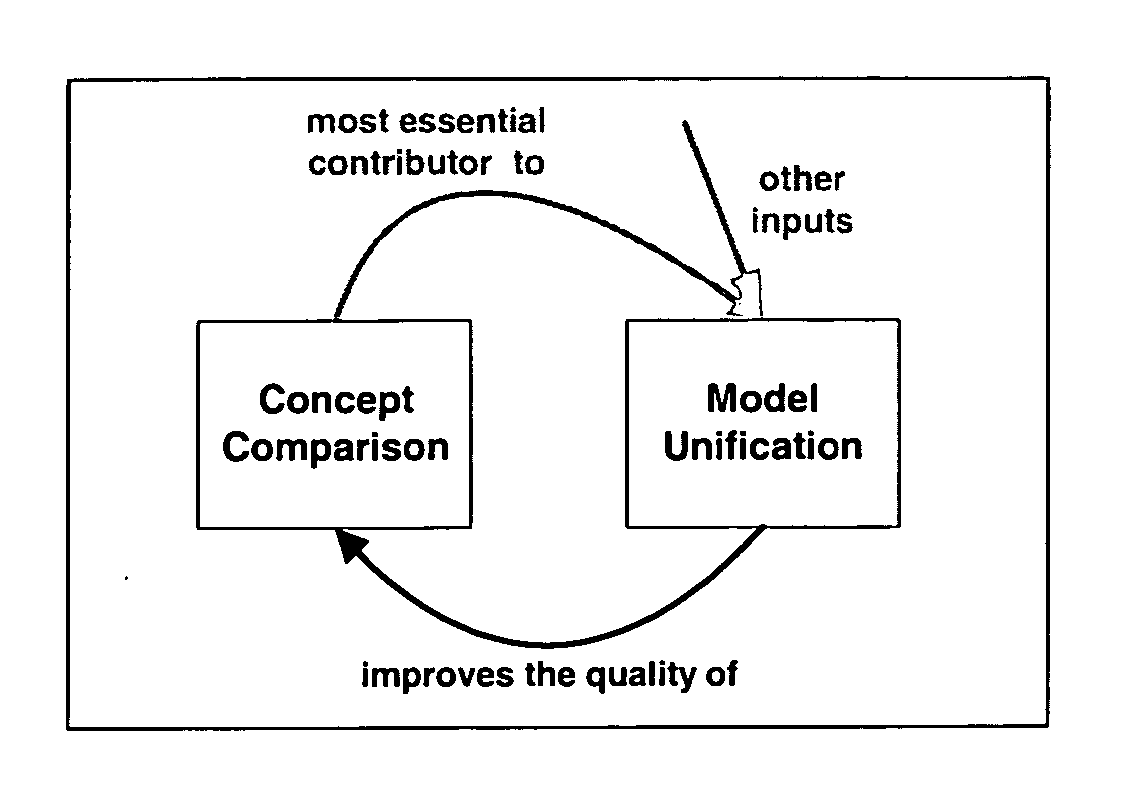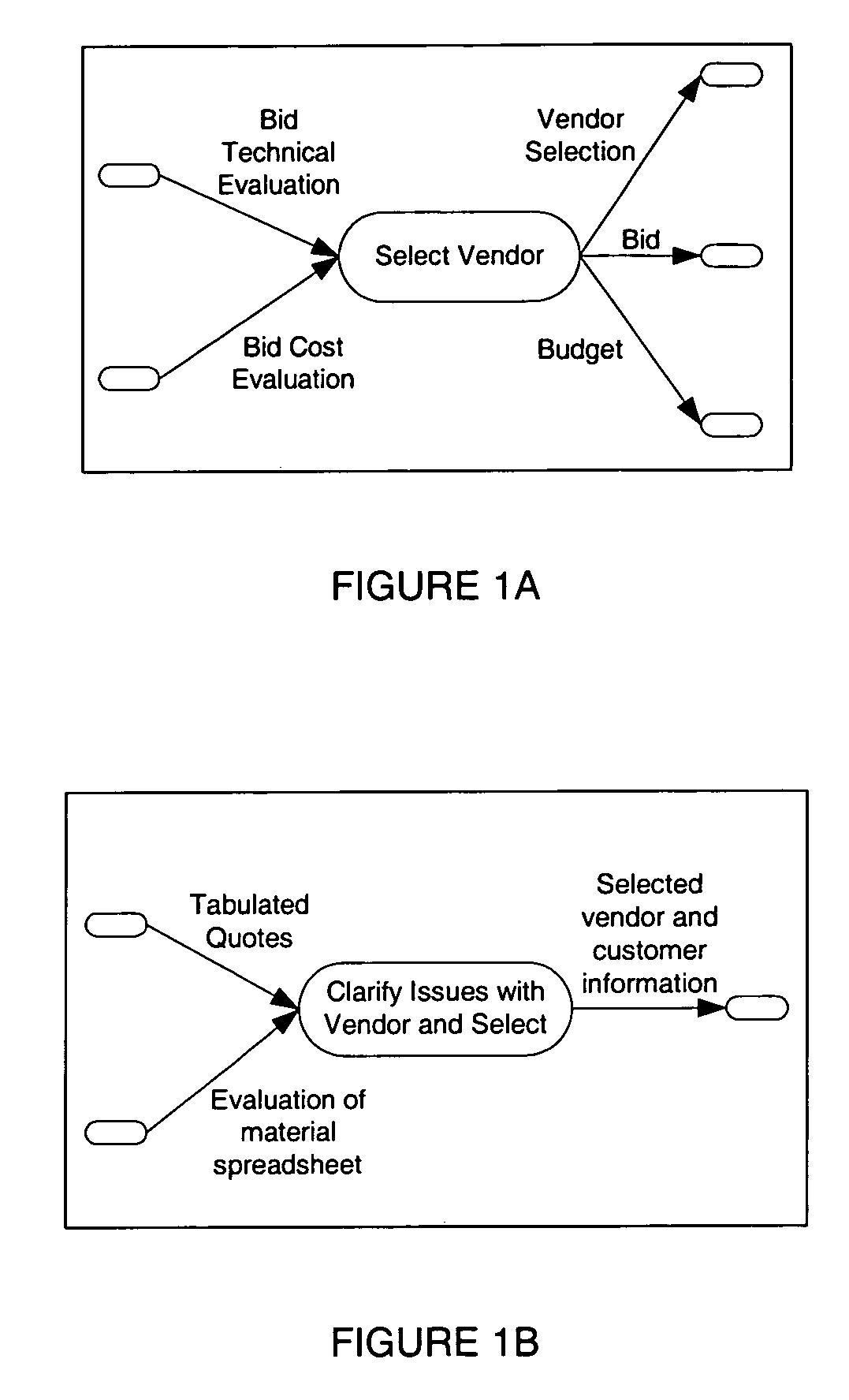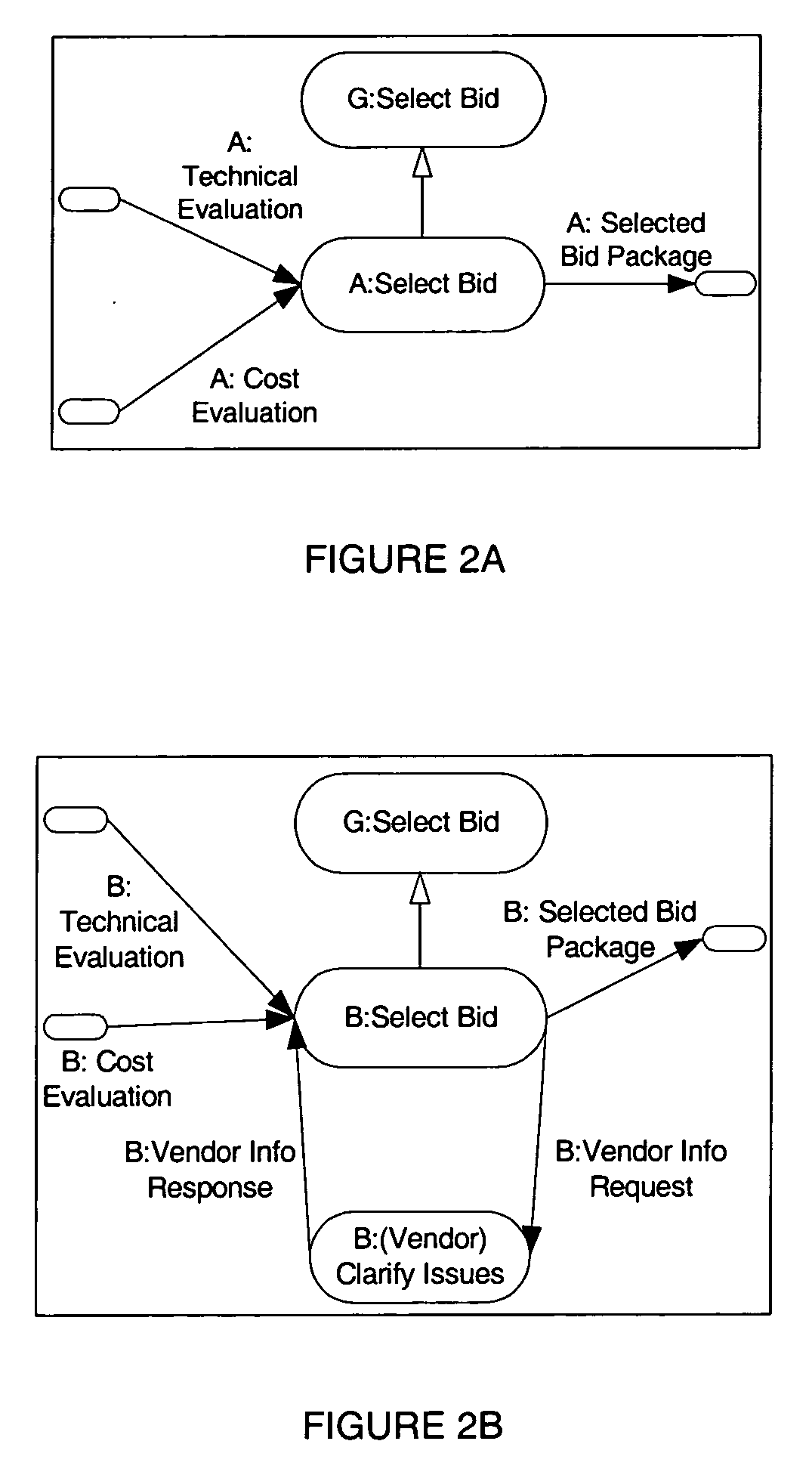Business process model unification method
a business process and model technology, applied in the field of semi-automatic unification of business process models, to achieve the effect of rapid system progress and higher quality of final outpu
- Summary
- Abstract
- Description
- Claims
- Application Information
AI Technical Summary
Benefits of technology
Problems solved by technology
Method used
Image
Examples
Embodiment Construction
[0035] This invention resides in a swarming algorithm that unifies ontological models of business processes in multiple organizations. Unification homogenizes the use of language and modeling style, and improves the integration of the models by increasing the degree to which commonalities are explicit. Unification is valuable because it enables automated comparison of business process models: for example, to analyze process alignment and plan for interoperability. The preferred embodiments take advantage of BPILO, which stands for BUSINESS PROCESS INTEROPERABILITY WITH LIVING ONTOLOGIES, and the swarm intelligence approach to computing.
[0036] Model unification is a process that transforms two or more original models into integrated multi-layer unified models. Our focus is on models of business processes, where processes are activities that transform inputs into outputs. We make the following assumptions about the original models that are the input to swarming unification: [0037] Th...
PUM
 Login to View More
Login to View More Abstract
Description
Claims
Application Information
 Login to View More
Login to View More - R&D
- Intellectual Property
- Life Sciences
- Materials
- Tech Scout
- Unparalleled Data Quality
- Higher Quality Content
- 60% Fewer Hallucinations
Browse by: Latest US Patents, China's latest patents, Technical Efficacy Thesaurus, Application Domain, Technology Topic, Popular Technical Reports.
© 2025 PatSnap. All rights reserved.Legal|Privacy policy|Modern Slavery Act Transparency Statement|Sitemap|About US| Contact US: help@patsnap.com



